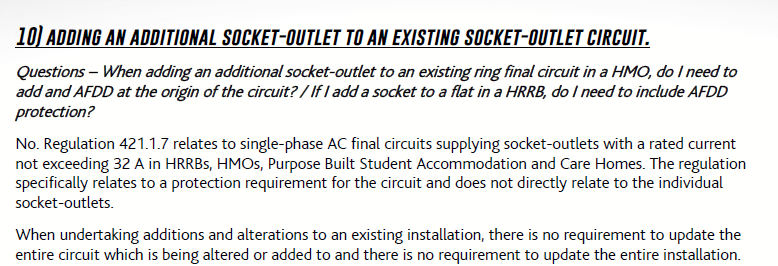I thought this was an interesting consideration from NICEIC Q and A on AFDDs. I would have thought the regulation was focused at what might end up connected to a socket rather than the AFDD protection for the circuit. Were that to be the case, then what about all the other circuits that do not have sockets?
